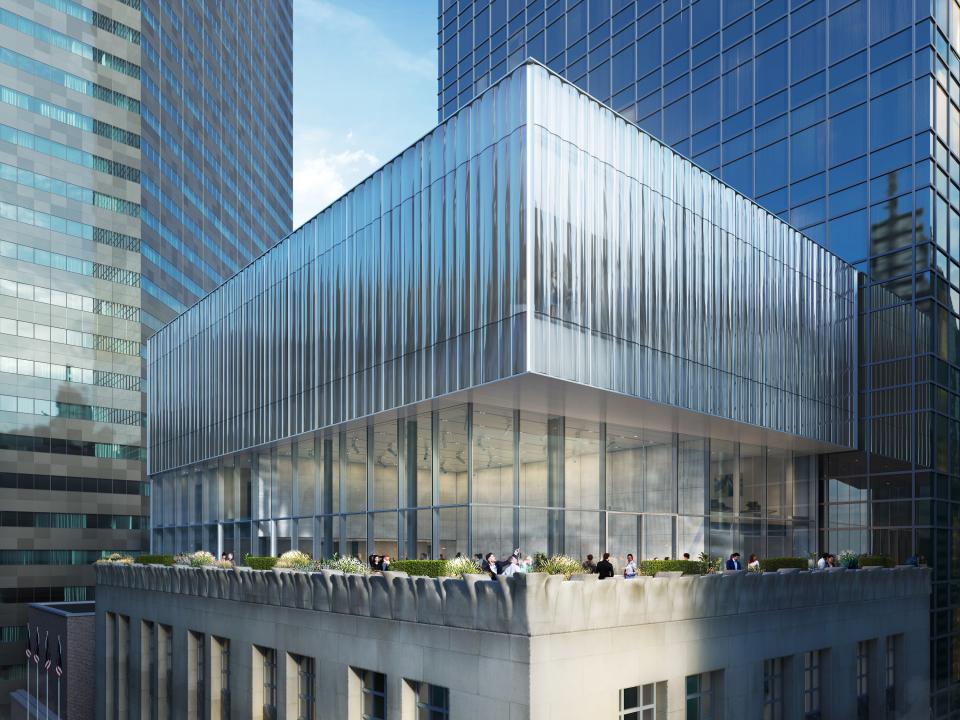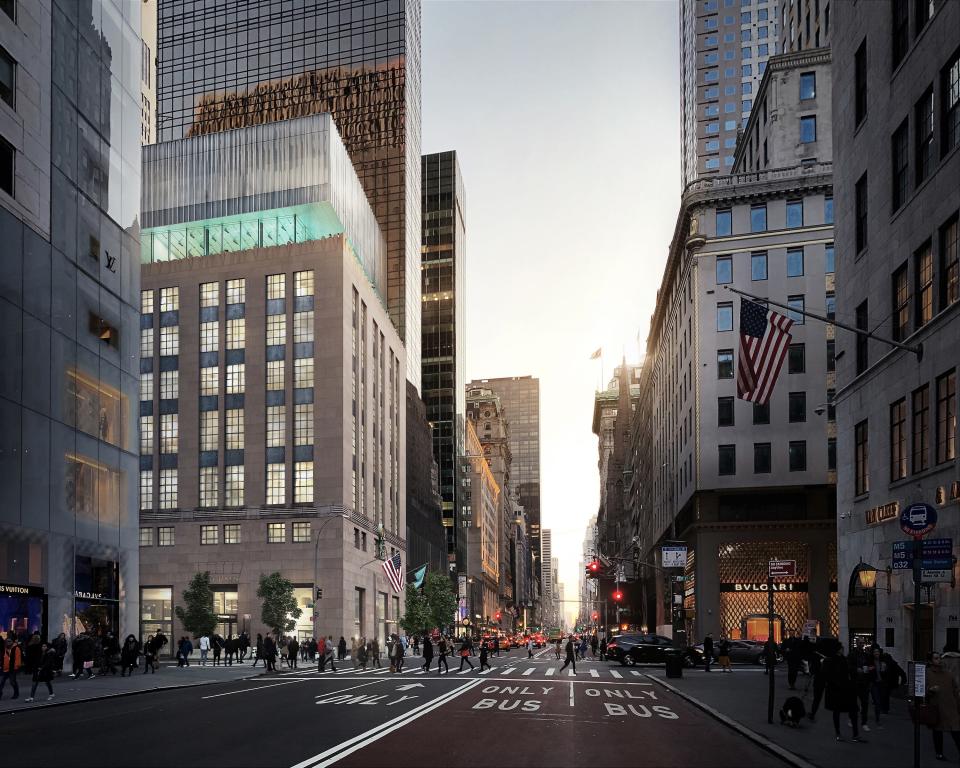OMA and Tiffany & Co. Reveal Renovation of Fifth Avenue Flagship
Famed for its luxury jewelry and gifts and made a household name by Holly Golightly, Tiffany & Co.’s Fifth Avenue flagship in New York will soon receive its first-ever holistic renovation and preservation. Located in a 1940 Art Moderne building, decorated with plenty of signature Tiffany blue, the seven-story shop has pivoted to more than a jeweler; in 2018, its Blue Box Café opened to much fanfare, including headlines about how patrons could finally, actually have breakfast at Tiffany’s. Now, New York– and Rotterdam-based architecture firm OMA is collaborating with Tiffany creative director Reed Krakoff to redesign, renovate, and expand the historic structure to fit new programmatic needs as the brand pushes similar public-facing initiatives. And while Krakoff engaged OMA on specific elements of the transformation—including the re-imagined upper volume atop the building—the revamp of the retail floors is being led by the creative director and his team.
“Tiffany’s Fifth Avenue Flagship is more than a retail space; it is a destination with a public dimension,” says Shohei Shigematsu, who heads OMA’s New York office. When completed in spring 2022, the project will renovate the ground level of the building, reorganize existing levels two through seven for a more intuitive flow, and create a trilevel extension on the rooftop for a multitude of functions, including events and private showrooms. “The new addition is informed by programmatic needs of the evolving brand—a gathering place that acts as a contemporary counterpart to the iconic ground level space and its activities,” the architect continues. Replacing a previous 1980 extension that was rendered in dark glass, the new addition is designed with double-height and column-free spaces wrapped in two different glass façades to create more interest from the street while maintaining energy efficiency.

“We knew the glass façade had to be quite special, for a brand that is known for its innovation in craft,” he says. The hybrid glass façade on the lower levels of the addition “allows visitors to have a distortion-free view out onto the city while creating a soft yet reflective surface when seen from the outside, [while] the curtain façade was an intentional move to distinguish the building from the otherwise harsh curtainwall of its neighbors.” The jewel box space is meant to continue the public feeling of the ground floor on the building’s top levels, helping to open the verticality of the flagship via a contrasting contemporaneity in design.

727 Fifth Avenue has been closed for renovation since January when Tiffany introduced its “Flagship Next Door,” a modern take on the shop housed in the adjacent building. While interior details of the renovation project have not yet been released, the jeweler’s creative director Reed Krakoff reveals that the architect’s plans for the company’s beloved historic flagship further the mission of its addition, a continuous experience most likely bathed in Tiffany blue. “I want people to walk in and feel as though they have been transported into the extraordinary world of Tiffany,” he says. “There will be experiential moments throughout the flagship that draw you up and around each floor. It’s really to encourage a journey of discovery, of Tiffany as a contemporary and multifaceted brand rooted in an incredible heritage of nearly two centuries.” And for those who still want to take breakfast at Tiffany’s, with its new multipurpose event space, there may be even more opportunities.
Originally Appeared on Architectural Digest

